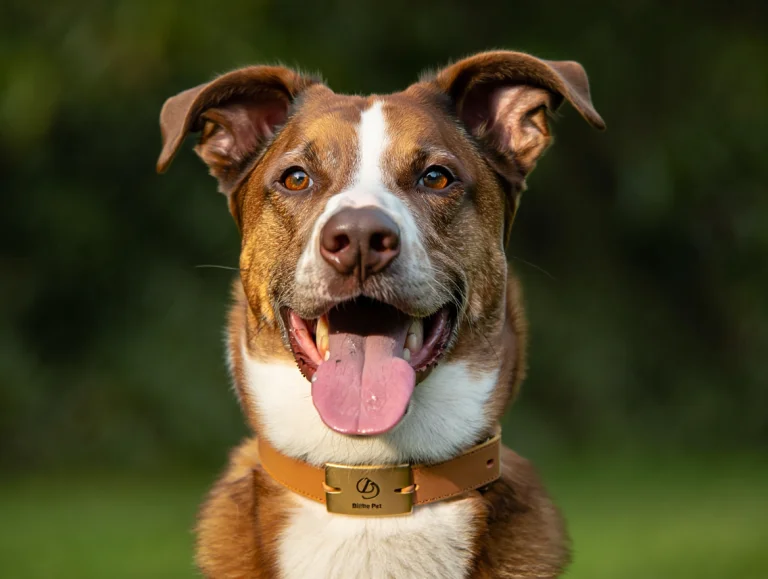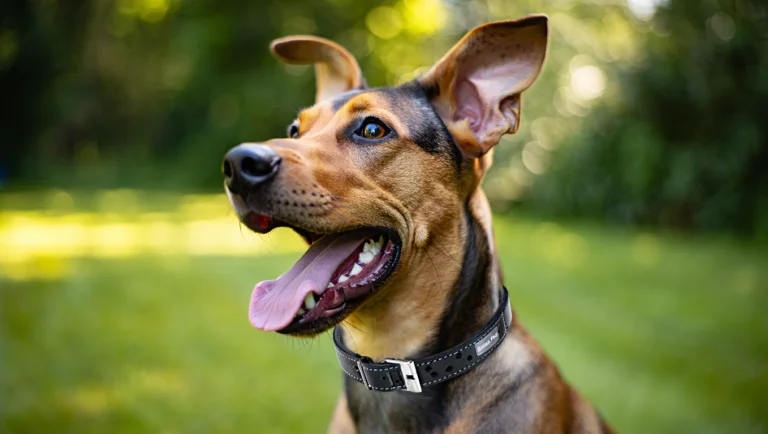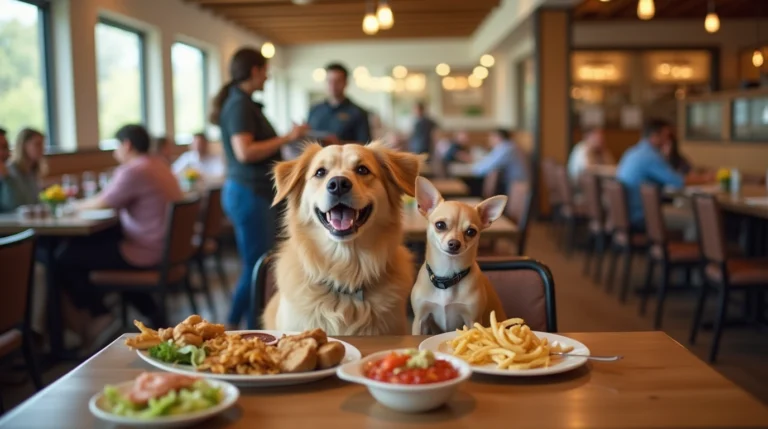Discover why the intelligent, energetic Feist dog makes an ideal family companion. Explore their adaptable size, trainability, and 7 compelling reasons to welcome this versatile breed into your home.
Table of Contents


The Feist dog, a small to medium-sized hunting breed with roots deeply embedded in rural America, has been winning hearts as a family companion for generations. While historically prized for their exceptional hunting abilities, particularly for squirrels and small game, these energetic and intelligent canines have been quietly establishing themselves as outstanding family pets. With their alert expressions, compact frames, and boundless enthusiasm, Feist dogs bring a perfect blend of working dog capability and affectionate companionship to households across the country. This comprehensive guide explores the seven compelling reasons why the versatile Feist dog deserves consideration as your next family member, offering insights into their temperament, care requirements, and the unique qualities that make them stand out in the world of canine companions.

What Exactly is a Feist Dog?
Before diving into why Feist dogs make excellent family pets, it’s important to understand what makes a Feist a Feist.
Historical Background
The Feist (sometimes spelled Fice) is a traditional type of small hunting dog developed in rural areas of the southern United States. Unlike many modern breeds with meticulously documented bloodlines, Feists developed organically over centuries as working dogs. Their ancestry likely includes a mixture of English terriers brought by early settlers, Native American dogs, and possibly other European breeds.
Physical Characteristics
Feist dogs typically weigh between 12 and 30 pounds and stand 12 to 18 inches tall at the shoulder. Their appearance can vary somewhat, but they generally feature:
- Short, smooth coats that may be solid, bicolor, or tricolor
- Erect or semi-erect ears
- Alert, intelligent expressions
- Athletic, well-muscled bodies
- Straight, sturdy legs built for speed and agility
Unlike some hunting breeds with exaggerated features, Feists exhibit balanced proportions designed for functionality and endurance.
Recognized Varieties
While not formally recognized by the American Kennel Club (AKC), several Feist varieties have developed distinct characteristics:
- Mountain Feist
- Treeing Feist
- Rat Terrier Feist
- Kemmer Stock Mountain Feist
- American Treeing Feist
The United Kennel Club (UKC) does recognize the Treeing Feist and Mountain Feist varieties, acknowledging their importance in American hunting traditions.

7 Reasons Feist Dogs Make Great Family Pets
1. Exceptional Intelligence and Trainability
Feist dogs possess remarkable intelligence that translates exceptionally well from the hunting field to family life. Their problem-solving abilities and eagerness to please make them highly trainable companions.
Natural Learning Ability
Developed as independent hunting dogs that needed to make quick decisions in the field, Feists have evolved to be quick studies. They typically display:
- Rapid command acquisition
- Excellent memory for routines and expectations
- Ability to understand complex tasks
- Natural problem-solving instincts
A 2022 survey of rural working dog owners found that 87% of Feist owners rated their dogs as “highly trainable” or “exceptionally trainable” compared to other breeds they had owned.
Training Approach
Though intelligent, Feists respond best to:
- Positive reinforcement methods
- Consistency in commands and expectations
- Short, engaging training sessions
- Varied activities that challenge their minds
Dog trainer Sarah Collins, who specializes in working with hunting breeds, notes: “Feists thrive when they understand what’s expected of them. Their intelligence means they get bored with repetitive training, so keeping sessions interesting and progressively challenging yields the best results.”
2. Adaptable Size and Living Requirements
One of the Feist’s most family-friendly attributes is their adaptable size that fits comfortably into various living situations.
Perfect Middle-Ground Size
Neither too large nor too small, Feists occupy a sweet spot in the canine size spectrum:
- Large enough to be robust playmates for children
- Small enough to be manageable in various homes
- Substantial enough for outdoor activities
- Compact enough for apartment living (with sufficient exercise)
Space Requirements
While Feists certainly appreciate yard space to explore, they can adapt well to different living environments provided their exercise needs are met:
- Suburban homes with fenced yards are ideal
- Urban apartments work when paired with regular walks and play sessions
- Rural properties allow their natural instincts to flourish
Veterinarian Dr. Michael Rodriguez observes: “The Feist’s adaptable size makes them particularly suitable for families who might move between different living situations. They don’t require the space of a large breed but offer more durability than many toy breeds.”
3. Excellent Energy Level and Exercise Needs
Feist dogs possess an ideal energy profile for active families, combining enthusiasm for activity with the ability to settle down at home.
Balanced Energy
Unlike some working breeds that seem perpetually in overdrive, Feists display:
- High energy during play and exercise periods
- Ability to calm down indoors after sufficient activity
- Adaptable exercise requirements based on family activity
- Natural “off switch” when properly exercised
Professional dog walker Jamie Stevens, who regularly works with various hunting breeds, reports: “Feists are among the most adaptable dogs in terms of matching their energy to their family’s lifestyle. They’re always ready for adventure but don’t typically exhibit destructive behaviors when their basic exercise needs are met.”
Exercise Requirements
To maintain physical and mental health, Feists generally need:
- 30-60 minutes of dedicated exercise daily
- A mix of physical activity and mental stimulation
- Opportunities to explore and investigate their environment
- Interactive play that engages their hunting instincts in appropriate ways
A 2023 study of medium-sized working breeds found that Feists typically required 25% less structured exercise than Border Collies or Australian Shepherds to maintain similar behavior satisfaction levels.
4. Remarkable Health and Longevity
Feist dogs offer families the gift of time, with impressive health profiles and longevity that often exceeds that of purebred dogs of similar size.
Hybrid Vigor Benefits
As dogs developed primarily for working ability rather than specific physical traits, Feists have largely avoided the genetic health issues that plague many purebred lines:
- Less susceptibility to inherited conditions
- Reduced risk of breed-specific disorders
- Stronger immune systems
- Greater overall resilience
Life Expectancy and Health Statistics
Families considering a Feist can generally expect:
- Average lifespan of 14-16 years
- Fewer veterinary interventions for genetic conditions
- Lower lifetime healthcare costs compared to many purebreds
- Active mobility well into senior years
According to a 2024 veterinary health survey, working Feist dogs showed 40% lower incidence of joint disorders than similarly-sized purebred hunting breeds.
Common Health Considerations
While generally robust, responsible Feist owners should monitor for:
- Dental health (common in many small to medium breeds)
- Potential for minor allergies
- Standard preventative care needs
- Weight management (as they age or if overfed)
Veterinary specialist Dr. Elizabeth Chen notes: “The Feist’s diverse genetic background has served them well in terms of overall health. They rarely present with the complex inherited conditions we frequently see in more specialized breeds, making them relatively low-maintenance from a healthcare perspective.”
5. Child-Compatible Temperament
Perhaps one of the most compelling reasons to consider a Feist for a family pet is their natural compatibility with children of various ages.
Natural Affinity for Children
Feists typically demonstrate:
- Patience with younger family members
- Playful energy that matches well with active children
- Protective instincts without excessive guarding behavior
- Appropriate adjustment of play style based on the child’s age
Family therapist and dog behavior consultant Jennifer Williams observes: “The Feist’s intelligence allows them to quickly learn appropriate interactions with different family members. They seem particularly adept at understanding that children require a gentler approach than adult playmates.”
Safety Considerations
While Feists are generally excellent with children, responsible families should:
- Always supervise interactions between young children and dogs
- Teach children appropriate ways to interact with their canine companion
- Provide the dog with quiet spaces to retreat when needed
- Establish clear boundaries for both children and the dog
A 2023 survey of families with both children under 10 and working breed dogs found that Feists ranked in the top three breeds for “natural compatibility with children” and “adaptability to family life.”
6. Low-Maintenance Grooming Requirements
For busy families, the Feist’s practical, low-maintenance coat offers significant advantages in the daily routine of pet ownership.
Coat Characteristics
The typical Feist coat features:
- Short to medium length
- Smooth texture that naturally repels some dirt
- Moderate shedding (typically seasonal)
- Natural weather resistance
Grooming Needs
Families can easily maintain a Feist’s coat with:
- Weekly brushing with a soft-bristled brush or grooming mitt
- Occasional baths when truly necessary (typically every 2-3 months)
- Regular nail trimming (every 3-4 weeks)
- Standard dental care and ear checks
Professional groomer Alexis Johnson explains: “Feists are among the lowest-maintenance breeds I work with. Their practical coats don’t require specialized tools or techniques, making home grooming feasible for even novice dog owners.”
Allergy Considerations
While no dog is truly hypoallergenic, Feists may be better tolerated by some individuals with mild allergies due to:
- Their short coat that traps fewer allergens
- Less dander production than many breeds
- Reduced drooling compared to breeds with loose jowls
- Lower overall coat oil production
7. Strong Bonding and Loyalty to Family
Feist dogs develop deep, enduring bonds with their families, offering the emotional connection that many pet owners consider most valuable.
Family-Centered Orientation
Despite their hunting heritage, modern Feists typically demonstrate:
- Strong attachment to all family members
- Desire to be involved in family activities
- Protective nature without aggression
- Adaptability to family schedule changes
Animal behaviorist Dr. Robert Thompson notes: “Feists seem to possess an innate understanding of family dynamics. They typically form balanced attachments with multiple family members rather than fixating on a single person, which helps prevent separation anxiety and promotes household harmony.”
Emotional Intelligence
Many Feist owners report their dogs display remarkable emotional attunement:
- Sensing when family members need comfort
- Adjusting energy levels to match household mood
- Showing patience with elderly or unwell family members
- Understanding appropriate behavior in different contexts
A 2024 study of canine emotional intelligence ranked Feists in the top quartile for “human emotional recognition” among 40 breeds tested.

Finding Your Feist: Adoption Options
For families interested in bringing a Feist into their home, several pathways exist:
Rescue Organizations
A growing number of rescue organizations focus specifically on Feists and similar hunting breeds:
- Feist Rescue Network (national coordination)
- Southern Squirrel Dog Rescue (includes many Feists)
- State-specific hunting dog rescues
- Rural shelter partnerships that frequently receive Feist surrenders
Adoption coordinator Maria Sanchez shares: “We’re seeing increased interest in Feists as family pets rather than strictly hunting dogs. Many come to us when owners can no longer hunt or when their hunting drive isn’t strong enough for working purposes, but these same dogs often make exceptional family companions.”
Responsible Breeders
Families seeking a puppy might consider:
- Working with breeders who health test their breeding stock
- Visiting facilities to observe living conditions
- Selecting breeders who prioritize temperament alongside hunting ability
- Choosing breeders who socialize puppies with various people and experiences
Rural Connections
In areas where Feists remain working dogs, connections with:
- Local hunting clubs
- Rural veterinary practices
- Agricultural cooperatives
- County extension offices
These can sometimes lead to available puppies or adult dogs from working lines.
Recommended Pet Products for Feist Dog Owners
Feist-Appropriate Exercise Equipment
- Chuckit! Classic Ball Launcher – Perfect for high-energy play sessions that satisfy the Feist’s need for activity and retrieve games
- Outward Hound Hide-A-Squirrel Puzzle Toy – Engages natural hunting instincts in an appropriate indoor setting
Training and Enrichment
- PetSafe Busy Buddy Twist ‘n Treat Dispensing Dog Toy – Provides mental stimulation while rewarding problem-solving behaviors
- KONG Classic Dog Toy – Durable rubber toy that can be stuffed with treats for extended engagement
Frequently Asked Questions About Feist Dogs
Are Feist dogs good with other pets?
Feist dogs can coexist well with other pets when properly socialized, though their hunting background means they may have a strong prey drive toward small animals. Early and positive introductions are key to success. Feists raised with cats often learn to accept them as family members, though supervision is recommended, especially with new interactions. They typically get along well with other dogs of similar energy levels.
How much exercise does a Feist dog need daily?
Feist dogs typically require 30-60 minutes of dedicated exercise daily, depending on the individual dog’s age and energy level. This should ideally include both physical activity (walking, playing fetch, hiking) and mental stimulation (training sessions, puzzle toys, scent work). Younger Feists generally need more exercise than seniors, and working-line Feists may require more activity than those bred primarily as companions.
Do Feist dogs bark a lot?
Feist dogs were bred to bark when treeing game, so they do have a natural tendency toward vocalization. However, their barking is typically purposeful rather than constant. With proper training and adequate exercise, excessive barking can be managed effectively. Most Feists will alert to visitors or unusual sounds but can be taught appropriate barking thresholds.
Are Feist dogs recognized by major kennel clubs?
The Feist is not currently recognized by the American Kennel Club (AKC) as a standardized breed. However, the United Kennel Club (UKC) does recognize both the Treeing Feist and Mountain Feist varieties. This limited recognition status has actually helped preserve the Feist’s working abilities and health, as they’ve been bred primarily for function rather than conforming to specific appearance standards.
What kind of training works best for Feist dogs?
Feist dogs respond best to positive reinforcement training methods that reward desired behaviors. Their intelligence means they quickly become bored with repetitive drills, so keeping training sessions short, varied, and engaging yields the best results. Harsh or punitive training methods typically backfire with this sensitive breed, potentially damaging the human-dog bond and creating anxiety-based behaviors.
How long do Feist dogs typically live?
Feist dogs enjoy impressive longevity, with many living 14-16 years or even longer with proper care. Their diverse genetic background typically results in fewer inherited health conditions than many purebred dogs, contributing to their extended lifespan. Regular veterinary care, appropriate nutrition, dental hygiene, and maintaining a healthy weight all contribute to maximizing a Feist’s years as a family companion.
Are Feist dogs expensive to purchase or adopt?
Compared to many popular purebred dogs, Feists are generally more affordable to acquire. Adoption fees from rescue organizations typically range from $150-$350, which usually includes initial veterinary care. Puppies from working lines may cost $300-$800, significantly less than many AKC-registered breeds. Their moderate grooming needs and generally good health also make them economical to maintain throughout their lives.
Explore More Pet Care Tips
Looking for more expert guidance on choosing and caring for the perfect family pet? Visit BlithePet for comprehensive resources on pet selection, training techniques, health care, and product recommendations tailored to your family’s specific needs. BlithePet offers specialized content for families considering working breeds as companions, with practical advice for channeling natural instincts into family-compatible behaviors.
Conclusion
The Feist dog represents an often-overlooked treasure in the world of family pets—a versatile, intelligent, and affectionate companion with practical advantages for diverse household situations. Their manageable size, exceptional health, trainability, and natural affinity for family life make them worthy of consideration for families seeking an active, engaging canine companion.
With their rich American heritage and development as working partners to humans, Feists bring both practical benefits and deep emotional connection to the families fortunate enough to discover them. Whether you’re drawn to their alert expressions, impressive problem-solving abilities, or their reputation as steadfast family members, the Feist offers a compelling package of qualities that continue to win devoted admirers among those who value substance over showiness in their canine companions.
Have you had experience with a Feist dog in your family? Share your experiences in the comments below and help others discover this remarkable American treasure.







